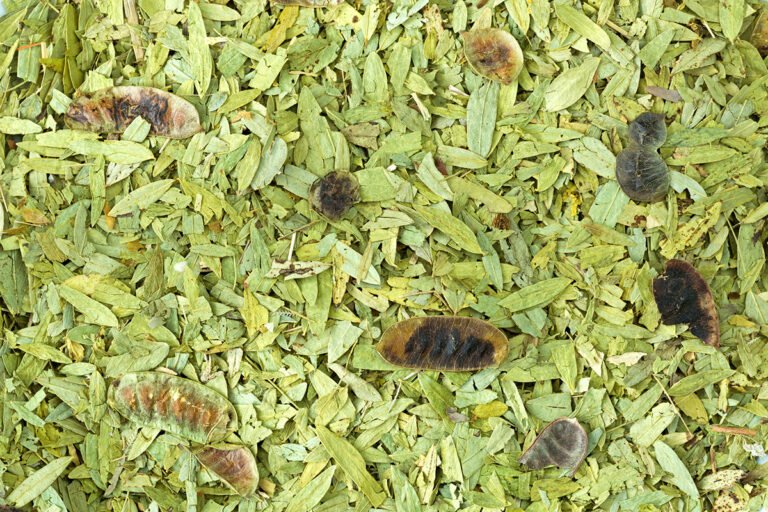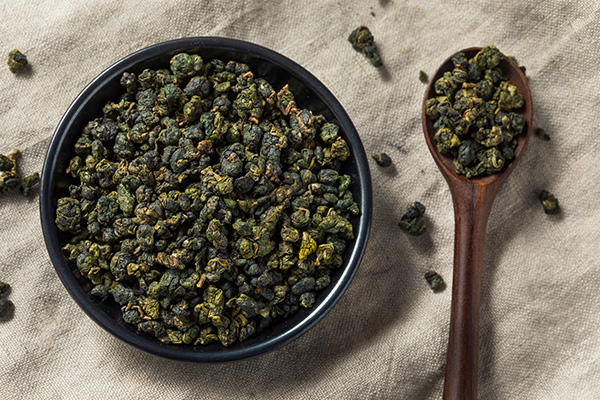What Is Palo Azul Tea Good For?
Have you heard of Palo Azul tea? This natural herbal tea is gaining popularity for its ability to alleviate various ailments and conditions. Latin American traditional cultures have used it for centuries. Still, its healing properties have only recently gained wider recognition.
Read this blog post to discover the benefits of Palo Azul tea and how it can improve your health.

What Is Palo Azul?
Palo Azul (scientific name Eysenharditia polystachya) is an evergreen shrub native to parts of Mexico and the Southern United States. Palo Azul translates to “blue wood,” which refers to its distinct blueish-gray bark. Palo Azul has been used for centuries in traditional medicine and spiritual ritual by indigenous peoples in Mexico, as well as in modern herbal medicine today. It’s recognized for its therapeutic properties and ability to promote kidney health, alleviate digestive discomforts, minimize inflammation, and regulate blood sugar levels.
Palo Azul Tea Benefits
Let’s take a look at how Palo Azul tea benefits you.
Might Help in Kidney Health
Palo Azul, also known as Kidneywood, has been used traditionally to treat kidney stones and urinary tract sediment. It is known for its alkalinizing nature, which can help reduce pain and irritation of the urinary tract by dissolving acidic precipitants. Research from 2012 published in the Asian Journal of Pharmaceutical and Clinical Research showed that Eysenhardtia polystachya could decrease the size of urinary stones in a urolithiasis model (1). Diuretics, like Palo Azul, may also decrease urinary calcium levels, as oxalate is one of the most common types of human kidney stones. Additionally, diuretics help flush out potassium which can help treat nephritis – an acute or chronic inflammation of the kidneys.
May Reduce Inflammation and Arthritic Pain
A recent study showed that Palo Azul might delay the progression of Rheumatoid Arthritis (2). It was determined that the flavonoids found in Palo Azul could inhibit inflammatory pathways and reduce the amount of pro-inflammatory cytokines. Researchers are studying natural anti-inflammatory agents due to their fewer side effects than other drugs. A second study further supported this, which tested its activity when administered topically, suggesting it could be used as an anti-inflammatory agent (3). This has been backed up by a third study as well (4).
Can Help Treating Digestive Upsets
The 2018 study published in the Journal of Ethnopharmacology highlights the efficacy of Palo Azul tea in treating inflammation and diarrhea (5). The research found that, compared to standard drugs, this tea provides just as much relief for diarrhea symptoms.
May Help in Weight Loss
Obesity is a significant global issue; insufficient exercise and unhealthy eating habits are often the root cause. A 2013 study by Hiromi Sato suggests that Palo Azul could help control obesity by increasing adiponectin secretion and decreasing insulin-resistant factors such as leptin and resistin (6). Nevertheless, it’s crucial to note that Palo Azul must not be used as a quick fix for weight loss.
May Improve Insulin Resilience and Decrease Glucose Levels
One of the possible mechanisms of kidney disease is defective insulin signaling, which Palo Azul may help to improve. A 2016 study from Japan found that Palo Azul has numerous physiological effects, including improving insulin resistance (7). Additionally, the administration of Palo Azul has been reported to significantly decrease glucose levels in an animal model of diabetes, which can prevent macro and microangiopathies from forming due to extra glucose leading to potential kidney damage (8).
May Help Reduce Pain
A study conducted in 2018 by Angel Josabad found that Palo Azul, a herb containing the natural metabolite D-pinitol, can be effective in reducing pain (5). It was shown that the potency of D-pinitol is comparable to that of standard drugs.
Palo Azul Tea May Reduce the Probability of Getting Urinary Tract Infections (UTIs)
UTIs may be more likely to occur with the presence of kidney stones (9). Research conducted and published in 2009 by the British Journal of Biomedical Science found that Palo Azul’s antibacterial properties were highly successful against certain bacteria linked to UTIs (10).
May Help Pass Drug Tests
Palo Azul is a natural diuretic that many claim can help pass drug tests. Despite there being no scientific studies, customers have reported success with its use. It can be connected to its diuretic properties and ability to clean the body of drug metabolites. The World Anti-Doping Agency prohibited diuretics in 1988, perhaps because of these properties.
Palo Azul Tea Side Effects
Palo Azul is a diuretic that increases urination, like green tea or coffee. However, Palo Azul is a potassium-sparing diuretic that helps flush out toxins while preserving electrolyte levels.
A recently published study showed that oral Palo Azul is not toxic. People have been drinking the bark for centuries with no reported side effects. However, drinking Palo Azul tea during pregnancy or lactation is not recommended due to the lack of research on its safety during these periods.
Where to Buy Palo Azul Tea
You can find Palo Azul tea in tea shops or online. Make sure to choose a high-quality brand, as they typically have a higher level of beneficial compounds.
Conclusion
In conclusion, Palo Azul tea is a powerful herb that has many potential benefits and few side effects. It can decrease kidney stone size, help reduce pain, improve insulin resilience, aid in weight loss, and treat digestive upsets.
Nevertheless, taking it during pregnancy or lactation is not recommended since its usage has not been studied during these periods. Although there have been no reported side effects from drinking Palo Azul tea, it’s still wise to consult your doctor before trying any new herbal supplement or remedy.
FAQ
Can I Drink Palo Azul Tea Everyday?
Drinking between one to three cups daily is sufficient for overall health and well-being.
It is recommended to drink at least four cups of Palo Azul daily if your goal is to burn fat and reduce abdominal fat.
For those seeking to relieve pain from an illness, drinking more than usual – four or more cups daily – for the first week is recommended. Consult your doctor first before drinking Palo Azul tea for pain relief.
Is Palo Azul Tea Good for the Liver?
The effectiveness of Palo Azul tea in treating liver diseases like cirrhosis remains inconclusive due to a lack of sufficient research. That said, a marked reduction in cholesterol levels was shown after administering Palo Azul ingredients. Cholesterol is a fat-like substance found in all our organism’s cells.
Is Palo Azul Tea Good for Kidney Stones?
Yes, compounds found in Palo Azul tea may potentially decrease the likelihood and severity of kidney stones by reducing the amount of calcium oxalate in the body.
Does Palo Azul Help You Lose Weight?
Yes, Palo Azul has been shown to help with weight management by increasing adiponectin production and decreasing insulin-resistant factors like leptin and resistin. This can help control obesity and promote healthy metabolic processes.
Does Palo Azul Work for UTI?
Yes. In 2009, the British Journal of Biomedical Science conducted studies that demonstrated the potent antibacterial properties of Palo Azul and its effectiveness against certain bacteria responsible for Urinary Tract Infections (UTIs). This suggests it may reduce the risk of developing UTIs for those with kidney stones.
When Should I Drink Palo Azul Tea?
There’s no specific guidance on when to drink Palo Azul tea, so you can drink it whenever it suits you. However, remember that Palo Azul is a diuretic and may cause increased urine production.
How Does Palo Azul Tea Taste?
Palo Azul tea has a subtle yet distinctive flavor that differentiates it from other herbal teas and tisanes. Its taste is comparable to pure water but contains subtle hints of sweetness and aromatics. It’s the perfect backdrop to combine with other flavors, making it a great addition to other herbal teas.
Do You Drink Palo Azul Hot or Cold?
Palo Azul tea can be served either hot or over ice cubes.
Why Is My Palo Azul Tea Not Blue?
When illuminated, Palo Azul tea will appear to have a blue hue. However, it will look yellow, tan, and dark brown without light.
How to Make Palo Azul Tea?
Check out our guide on how to make Palo Azul tea.






